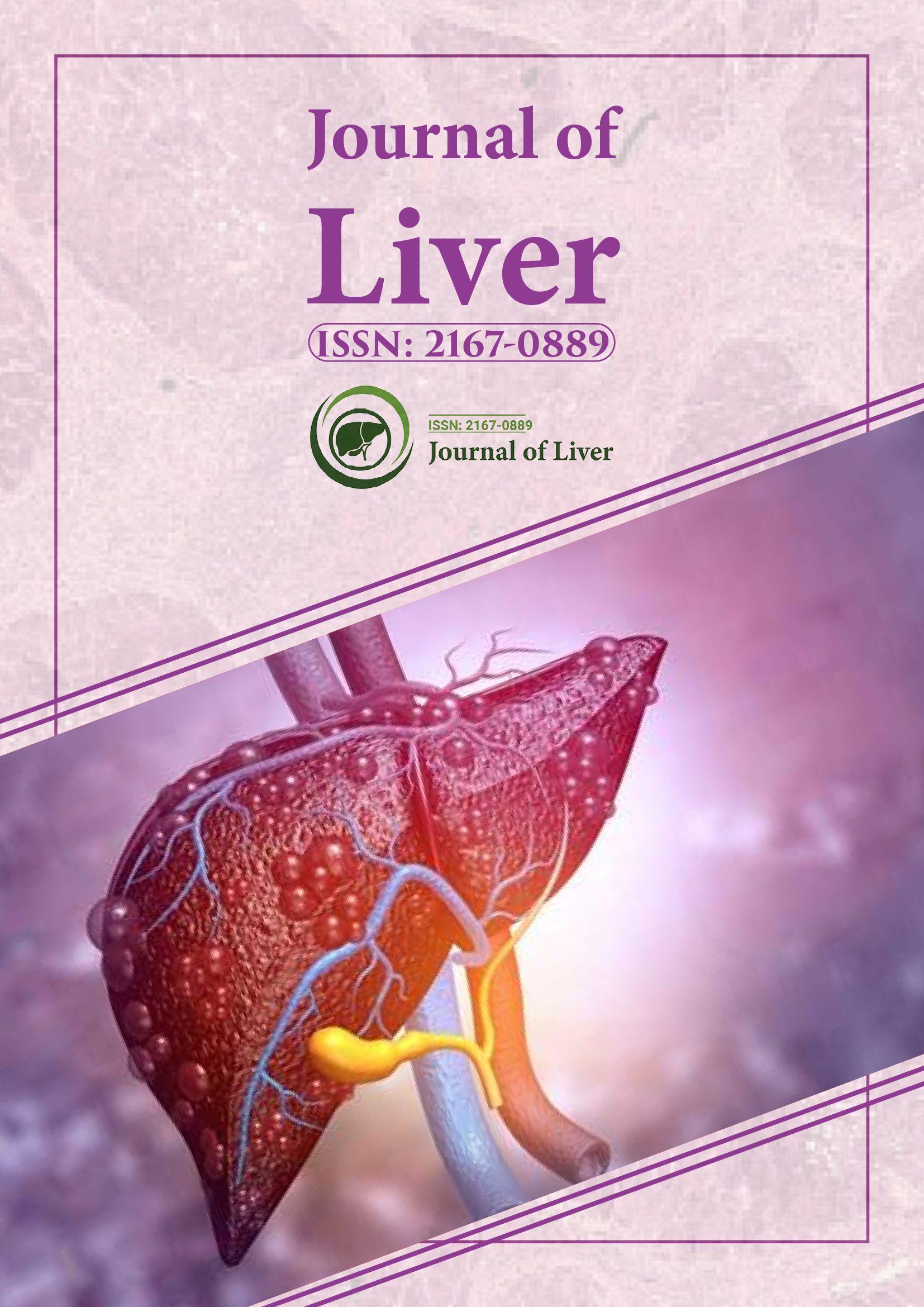Indexed In
- Open J Gate
- Genamics JournalSeek
- Academic Keys
- RefSeek
- Hamdard University
- EBSCO A-Z
- OCLC- WorldCat
- Publons
- Geneva Foundation for Medical Education and Research
- Google Scholar
Useful Links
Share This Page
Journal Flyer

Open Access Journals
- Agri and Aquaculture
- Biochemistry
- Bioinformatics & Systems Biology
- Business & Management
- Chemistry
- Clinical Sciences
- Engineering
- Food & Nutrition
- General Science
- Genetics & Molecular Biology
- Immunology & Microbiology
- Medical Sciences
- Neuroscience & Psychology
- Nursing & Health Care
- Pharmaceutical Sciences
Short Communication - (2025) Volume 14, Issue 1
Role of Systemic Inflammation in the Pathogenesis of NAFLD and Diabetes
Olga Dressler*Received: 25-Feb-2025, Manuscript No. JLR-25-29101; Editor assigned: 27-Feb-2025, Pre QC No. JLR-25-29101 (PQ); Reviewed: 13-Mar-2025, QC No. JLR-25-29101; Revised: 20-Mar-2025, Manuscript No. JLR-25-29101 (R); Published: 27-Mar-2025, DOI: 10.35248/2167-0889.25.14.241
Description
The rising prevalence of non-communicable diseases is reshaping global health priorities. Among these, Non-Alcoholic Fatty Liver Disease (NAFLD) and diabetes mellitus—particularly Type 2 Diabetes Mellitus (T2DM)—stand out for their growing incidence and shared risk factors. Both conditions are closely related to insulin resistance, obesity and systemic inflammation. While each disease presents a distinct clinical profile, their underlying mechanisms often converge.
Non-Alcoholic Fatty Liver Disease
NAFLD encompasses a range of liver abnormalities from simple steatosis to Non-Alcoholic Steatohepatitis (NASH), fibrosis and cirrhosis. It is defined by hepatic fat accumulation exceeding 5% of liver weight in the absence of significant alcohol consumption. The disease is now considered the most prevalent chronic liver condition globally, affecting up to 30% of the adult population.
Central to NAFLD is insulin resistance. Hepatic steatosis develops due to enhanced lipogenesis, increased free fatty acid influx from adipose tissue and impaired fatty acid oxidation. Over time, oxidative stress, lipid peroxidation and mitochondrial dysfunction contribute to hepatocyte injury, which sets the stage for inflammation and fibrosis. The liver's ability to respond to metabolic insults is compromised, leading to disease progression [1-3].
Oxidative stress and mitochondrial dysfunction
Reactive Oxygen Species (ROS) play a major role in NAFLD and diabetes pathogenesis. Excess nutrient availability in hepatocytes leads to mitochondrial overload and incomplete oxidation of fatty acids. This results in ROS production, mitochondrial DNA damage and impaired ATP synthesis.
Oxidative stress damages proteins, lipids and cellular structures, leading to apoptosis and necrosis. It also activates hepatic stellate cells, which are central to fibrogenesis. In diabetes, hyperglycemia-induced oxidative stress further damages endothelial cells and contributes to both microvascular and macrovascular complications [4-7].
Gut-liver axis and microbiota
Emerging evidence highlights the role of the gut-liver axis in the development of NAFLD and T2DM. Alterations in gut microbiota composition, often referred to as dysbiosis, can lead to increased intestinal permeability. This allows translocation of bacterial endotoxins such as Lipopolysaccharide (LPS) into portal circulation, triggering hepatic inflammation via Toll-Like Receptor 4 (TLR4) activation.
Microbial metabolites such as short-chain fatty acids and bile acids influence glucose and lipid metabolism. Imbalances in these metabolites can disrupt homeostasis, promoting steatosis and insulin resistance [8-10].
Conclusion
The interaction between NAFLD, diabetes mellitus and inflammation represents a significant and growing challenge for global health. Their shared metabolic and immunological pathways not only drive disease progression but also contribute to the development of serious complications. Addressing these conditions in isolation is unlikely to yield lasting results. Instead, a holistic approach that recognizes their interdependence is essential for effective prevention and management.
References
- Qiu YY, Zhang J, Zeng FY, Zhu YZ. Roles of the peroxisome proliferator-activated receptors (PPARs) in the pathogenesis of nonalcoholic fatty liver disease (NAFLD). Pharmacol Res. 2023;192:106786.
- Vonderlin J, Chavakis T, Sieweke M, Tacke F. The multifaceted roles of macrophages in NAFLD pathogenesis. Cell Mol Gastroenterol Hepatol. 2023;15(6):1311-1324.
- Hughey CC, Puchalska P, Crawford PA. Integrating the contributions of mitochondrial oxidative metabolism to lipotoxicity and inflammation in NAFLD pathogenesis. Biochim Biophys Acta Mol Cell Biol Lipids. 2022;1867(11):159209.
- Aghaei SM, Hosseini SM. Inflammation-related miRNAs in obesity, CVD, and NAFLD. Cytokine. 2024;182:156724.
- Chen H, Tan H, Wan J, Zeng Y, Wang J, Wang H, et al. PPAR-γ signaling in nonalcoholic fatty liver disease: Pathogenesis and therapeutic targets. Pharmacol Ther. 2023;245:108391.
- Pafili K, Roden M. Nonalcoholic fatty liver disease (NAFLD) from pathogenesis to treatment concepts in humans. Mol Metab. 2021; 50: 101122.
- Polyzos SA, Chrysavgis L, Vachliotis ID, Chartampilas E, Cholongitas E. Nonalcoholic fatty liver disease and hepatocellular carcinoma: Insights in epidemiology, pathogenesis, imaging, prevention and therapy. Semin Cancer Biol. 2023; 93, 20-35.
- Jian H, Li R, Huang X, Li J, Li Y, Ma J, et al. Branched-chain amino acids alleviate NAFLD via inhibiting de novo lipogenesis and activating fatty acid β-oxidation in laying hens. Redox Biol. 2024;77:103385.
- Wen Y, Li J, Mukama O, Huang R, Deng S, Li Z. New insights on mesenchymal stem cells therapy from the perspective of the pathogenesis of nonalcoholic fatty liver disease. Dig Liver Dis. 2025.
- Zhang QR, Dong Y, Fan JG.Early-life exposure to gestational diabetes mellitus predisposes offspring to pediatric nonalcoholic fatty liver disease. Hepatobiliary Pancreat Dis Int. 2023.
Citation: Dressler O (2025). Role of Systemic Inflammation in the Pathogenesis of NAFLD and Diabetes. J Liver. 14:241.
Copyright: © 2025 Dressler O. This is an open-access article distributed under the terms of the Creative Commons Attribution License, which permits unrestricted use, distribution, and reproduction in any medium, provided the original author and source are credited.
